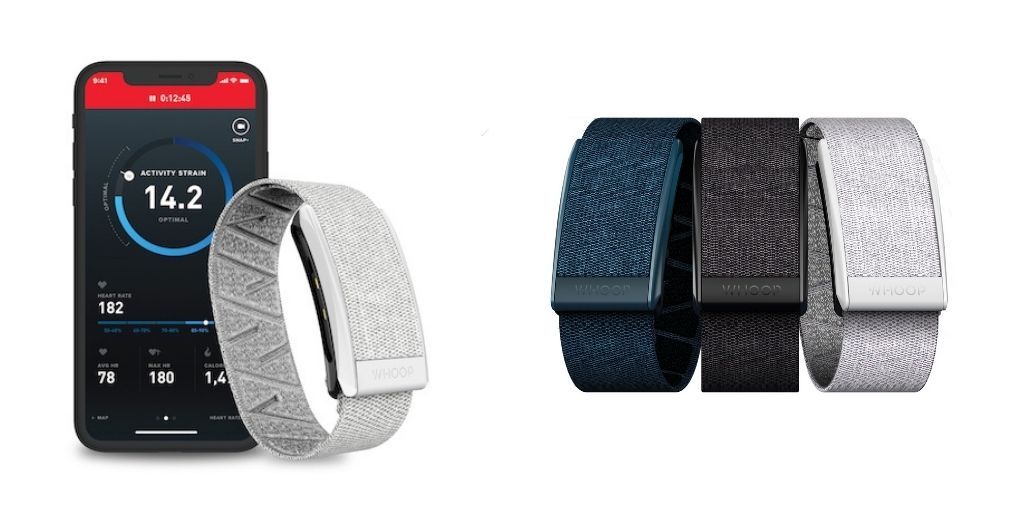
Like many golfers, I signed up for a WHOOP this summer after learning that the PGA Tour was distributing the bands to players, caddies, officials and golf journalists. The decision came after PGA Tour player Nick Watney decided to seek out a Covid-19 test after noticing abnormal readings from his WHOOP, which is a band worn on the wrist or upper arm to monitor various medical data. Watney was asymptomatic at the time and had just recently tested negative—suggesting that WHOOP had provided an early warning that Watney might be infected.
The efficacy of the WHOOP as a means of preventing the transmission of Covid-19 is far from settled, but I’ve held on to the WHOOP for reasons unrelated to the pandemic. Primarily, I wear the WHOOP because I feel it helps my overall health—and, as a result, I believe it will help my golf game by extending the years I can remain healthy and competitive.
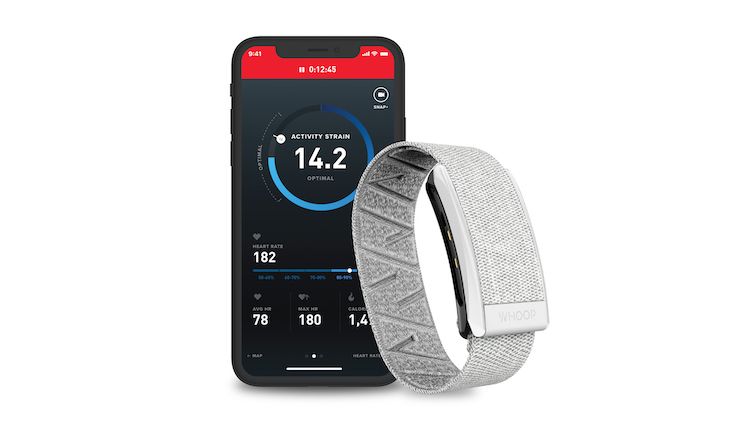
My Body, My Laboratory
In 2011, I wrote a feature article for TIME Magazine on scientists who experiment on themselves. I hypothesized at the time that many ordinary people would soon fall into this category through the adoption of “smart-connected” wearables and self-tracking. But at the time, the technology was clunky and immature, so I wasn’t an early adopter myself. But I’ve always felt that wearables can play a crucial role in living up to the wise Delphic maxim: Know Thyself.
I find it empowering to be able to monitor my biometrics, and WHOOP offers a variety of measurements for me to track. Using an optical HR monitor, the WHOOP band can measure a user’s heartrate, sleep, respiration rate and something called heart-rate variability (HRV), a measurement that can indicate how well a user has recovered from recent stress.
The band is paired with a smartphone app that is designed to tell athletes whether they need to take it easy (to improve recovery) or go harder (to increase strain). Strain can be either the result of a workout or because of some exogenous factor—stress, lack of sleep, dehydration, an illness and so on. Each day when you wake up, WHOOP gives you a recovery score that lets you know how hard you should push yourself that day. The band measures the strain of each workout and the cumulative strain of your day’s activity—and a “strain coach” tells you when you are approaching the optimal strain given your overnight recovery. If you exceed that level of strain, the band warns you that you may suffer reduced recovery the next day.
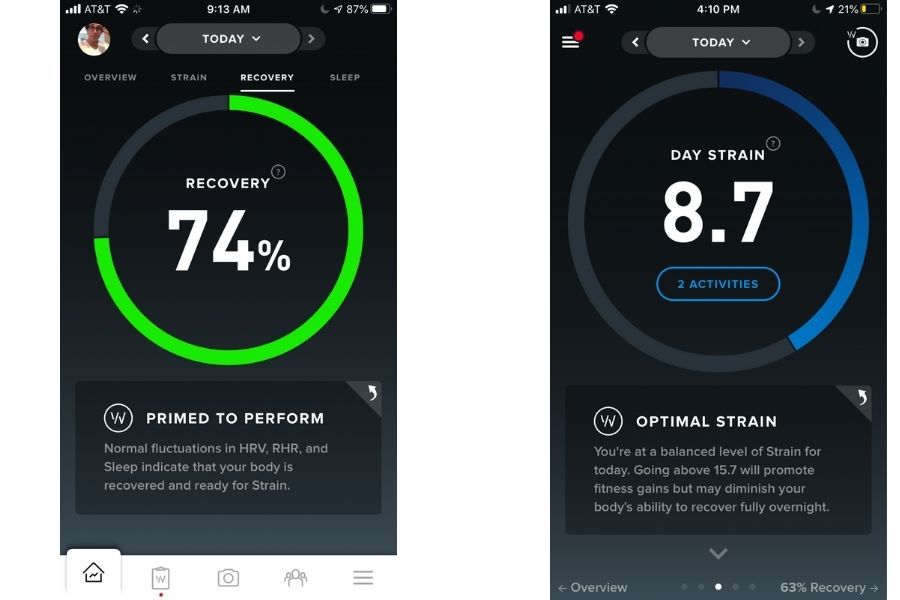
Whoop Learns Over Time
The more you wear the band the more accurate it becomes—both in measuring your normal “baseline” but also in recognizing your activities. For instance, after logging a certain number of golf rounds or cycling sessions, the band will automatically recognize when you start playing golf or cycling and keep track of the activity (and the strain it causes). It also tracks your progress by, for instance, automatically reporting when you work harder during an activity than is typical--e.g., “You spent 16 minutes at 70-80% of your max heart rate during this workout, which is 4 minutes longer than you normally spend when cycling.”
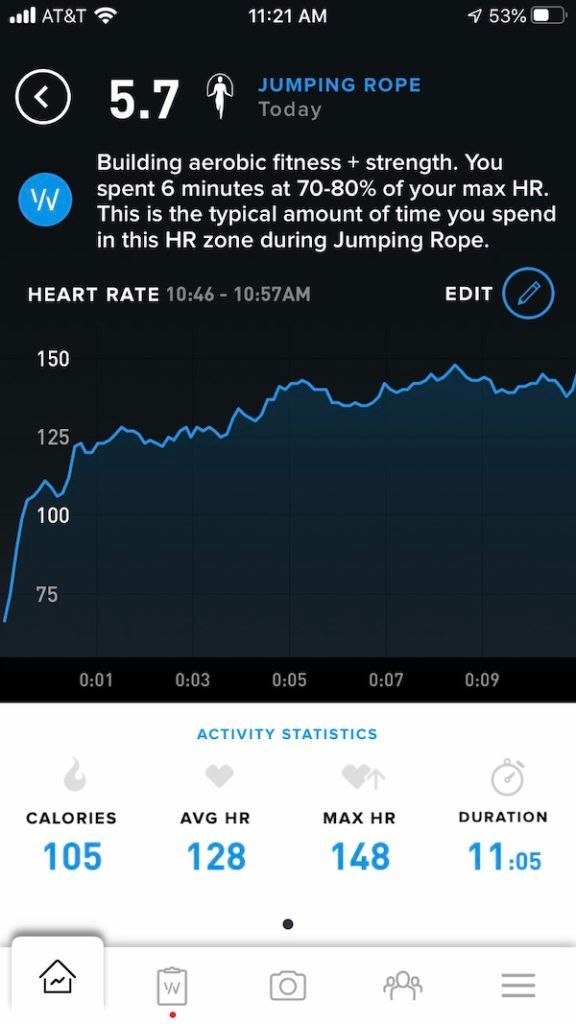
This is obviously a lot of personal data to share with a for-profit company, but at least on paper, WHOOP has a strong privacy policy, which assuaged my concerns. Price might be another factor for those considering using a WHOOP: The waterproof band is free but requires a $30/month subscription with a minimum 6-month commitment (after a free 30-day trial). The band’s battery life is about 4 or 5 days and it can be charged while you wear it.
How I Use WHOOP for Golf
Even before WHOOP became a free accessory on tour, it had a popular following among elite golfers including Rory McIlroy and Dustin Johnson. I find this puzzling: the device is clearly designed for a different sort of athlete—those who often overtrain, thus increasing the risk of injury or diminishing fitness gains (I’m thinking cyclists, marathoners, triathletes, and so on). What’s more, because the device only measures heart rate and respiration, and can’t measure stress hormones and other internal responses to stress, it seems a better fit for athletes that take on heavy cardio strain than those who focus on resistance training (such as golfers). Indeed, when I do a heavy weight-lifting session I am always shocked at how little strain the band registers. I won’t see confirmation of my hard work until the next morning, when I see a reduced recovery.
If you want to understand how Rory uses his WHOOP, he’s recorded a podcast on it. For me, I’ve found the WHOOP has helped my golf game in two main ways:
- It’s helped me become more mindful of my sleep. When I first started wearing the band I learned I wasn’t sleeping enough. I had developed a bad habit of scrolling social media at bed-time, which was reducing what WHOOP labels as “sleep efficiency”—the time I spend asleep in bed. Personally, I find that when I’m well-rested I make better decisions on the golf course and am able to demonstrate more patience during a round. I become irritable and unfocused if I’m tired and things don’t go my way. I saw an immediate improvement once I increased my sleep efficiency.
- I’ve learned that golf burns a ton of calories. Here’s the screenshot of a recent “shamble” I played in a golf cart at my local club and a screenshot of a recent 76-minute hike up a mountain in Colorado, which by my standards was a real ass-kicking workout. A social round of cart-golf burned over 1000 calories; the hike burned half that amount. This opened my eyes to the importance of pre-round and on-course nutrition. My go-to snack at the turn—a single banana--simply wasn’t providing enough fuel. Along with feeling drained by the end of the round, it led me to overeat in the clubhouse because I arrived very hungry, which led to weight gain. Now I take granola, a banana, and a peanut butter and jelly sandwich on the course with me for every round—and skip the post-round burger and fries.
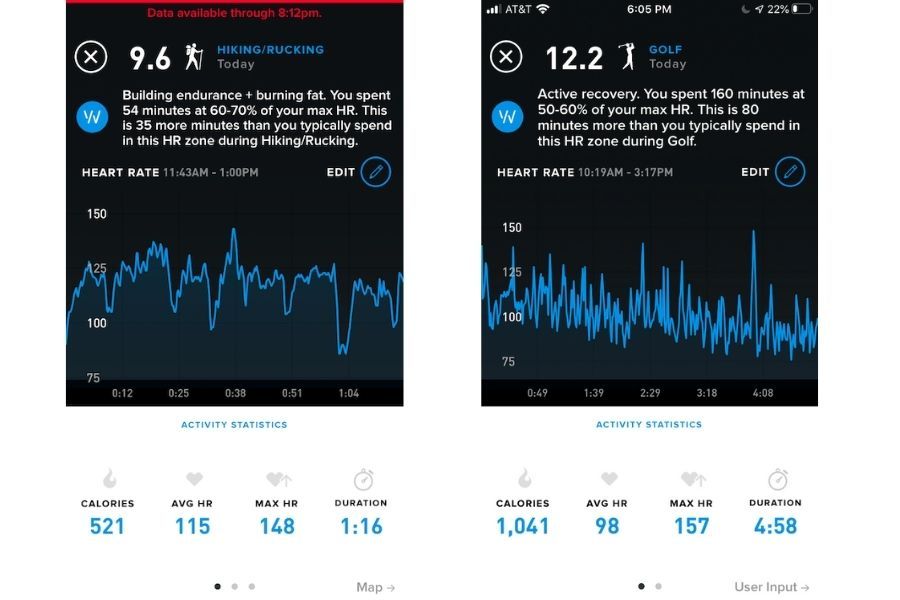
Image is Everything
These are admittedly modest contributions to my golf game—which I probably could have acquired from any smartwatch or other wearable that monitors basic biometric data. So why do I still use the WHOOP? I’m a believer that overall health is underemphasized in golf fitness instruction, which tends to focus on strength and mobility. What good is hitting 170mph ball speed at 50 years old if you suffer a myocardial infarction at 55? I wear a WHOOP because it’s not targeted specifically for golfers, but athletes. Wearing it helps me self-identify as a person who is conscientious about their fitness and overall health—not just my ability to hit a golf ball over vast distances.
Other wearables have “gamification” features such as Apple Watch’s “activity rings” and the virtual coins or stars that other wearables award to users at certain exercise milestones. I like that WHOOP has none of that—it assumes that you are serious about your fitness and can stay motivated without the use of behavioral gimmicks. It was designed with competitive athletes in mind. My desire to be the type of person who wears a WHOOP helps me be that type of person—it keeps me motivated, even as staying fit gets harder and harder in middle age.
WHOOP’s Biggest Benefit
But the most important reason I have kept my WHOOP has nothing to do with physical benefits—but rather the improvement it has made to my mental health. Partly this is through an increase in cardio since using the device (some studies show regular aerobic exercise to be as effective for treating mild depression as pharmaceuticals). But mostly it’s through WHOOPs “community” feature which has allowed me to connect with my friends and keep tabs on their sleep and activity levels. If I see a friend in Dallas hasn’t been sleeping well, I can reach out and ask if everything is alright. If a friend in London has a particularly epic workout, I’ll cheer them on.
These interactions have been a lifeline for me during a difficult time. Researchers have found that women's friendships are conducted face to face: They talk, gossip, cry together. Men's friendships are side by side: We play golf. Watch sports on TV, and so on. I would never pick up the phone to just chew the fat with my friend in Dallas or London (perhaps I should). But being able to check-in and talk about our sleep, recovery, and workouts has provided a needed source of connection and an excuse to sustain the friendship.
The Bottom Line
Has my WHOOP made me a better golfer? Not in the short term. But golf is a lifetime pursuit. Staying happy, healthy and connected to friends and family is a great foundation for longevity—and my WHOOP has certainly helped with that.
Would I recommend the WHOOP to other golfers? It depends. If you already have a smartwatch or other wearable fitness tracker (such as a Fitbit or Oura), I see no reason why you would need a WHOOP. But if like me, you are a late-adopter to smart-connected wearables, then the WHOOP can be a great option for building life-long healthy habits.
We care about the protection of your data Read our Privacy Policy